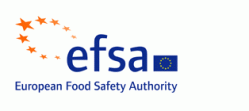EFSA deems 62 flavouring substances safe but flags one

The EFSA panel on Food Contact Materials, Enzymes, Flavourings and Processing Aids, released its findings on March 6 following analysis on 63 flavouring substances used within the EU.
The panel concluded that “62 substances do not give rise to safety concerns at their levels of dietary intake, estimated on the basis of the MSDI (maximised survey-derived Daily Intakes) approach.”
It detailed however that “a concern for genotoxicity could not be ruled out” for one substance 5-pentyl-3H-furan-2-one (FL – no: 10.170).
The flavouring substances analysed belong to the chemical groups 9, 13 and 30 and include alcohols, aldehydes, acetals, carboxylic acids and esters containing additional oxygenated functional groups and lactones.
EFSA noted that 50 of the substances occurred naturally in a wide range of food items as well.
MSDI strengthened with mTAMDI approach
The panel used the MSDI approach to estimate the per capita intakes of the flavouring substances throughout Europe, but said that “in a number of cases [this method] would grossly underestimate the intake by regular consumers”.
An estimate was also therefore provided by the panel, using a modified Theoretical Added Maximum Daily Intake (mTAMDI) method, based on normal levels used by industry.
On the basis of the default MSDI approach, it was concluded that 62 substances do not surpass the ‘threshold for concern’ of daily intake throughout Europe and “would not give rise to safety concerns at the estimated levels of intake.”
The mTAMDI approach showed that for 58 of these substances showed intake to be above the threshold of concern.
However, “in those cases where the mTAMDI approach indicated that the intake of a flavouring substance might exceed its corresponding threshold of concern, the Panel decided not to carry out a formal safety assessment,” as more precise data on use and use levels is required.
Flavour substances evaluated and found to have no safety concern at the estimated levels of intake:
FL-no: 02.132, 02.198, 02.242, 05.149, 06.088, 06.090, 06.095, 06.097, 06.102, 06.135, 07.169, 08.053, 08.082, 08.090, 08.103, 08.113, 09.333, 09.345 - 09.354, 09.360, 09.502, 09.558, 09.565, 09.580, 09.590, 09.601, 09.626, 09.629, 09.633, 09.634, 09.644, 09.683, 09.815, 09.824, 09.832, 09.833, 09.862, 09.874, 09.916, 09.951, 10.038, 10.039, 10.040, 10.045, 10.047 - 10.049, 10.052, 10.055, 10.058, 10.059, 10.063 10.068 and 10.168
























